Why direct mail is the secret weapon marketers shouldn't overlook

In a world of efficient BS, direct mail is a warm, effective hug
I’ve spent about a decade now working in large marketing organisations and marketing effectiveness in some way or another. Whether that was hustling as a student brand manager at Innocent Smoothie or leading System1’s global partnership and research. And yet, in that time, I don’t think I’ve seen a direct mail campaign suggested once.
It’s as if it doesn’t exist in modern marketing conversations. But for those who have cracked it, direct mail is a secret weapon for growth.
The forgotten power of direct mail
I was inspired to write this by Rory Sutherland, Vice Chairman of Ogilvy and self-proclaimed behavioural science nerd, who recently shared a LinkedIn post1 about direct mail’s continued effectiveness. He pointed out the obvious (like he often does). While it doesn’t make sense from an efficiency standpoint—being an expensive way to reach a single person—it remains one of the most successful forms of customer acquisition.
Scarcity and costly signalling in a world of constant, disposable digital messaging wins big. And receiving something tangible feels valuable. When a brand invests in sending a piece of mail, the recipient instinctively perceives it as important.
And yet, modern marketers’ bias seems to overlook it totally. I reckon this is down to a few things.
- An obsession with efficiency—direct mail isn’t cheap on a cost-per-contact basis.
- The need for quick, measurable results—marketers want immediate attribution, and direct mail’s impact unfolds over days and week (I’m so proud of that pun, must call and tell mum).
- Our fixation on cheap reach — ignoring the fact that all reach isn’t equal.
The emotional appeal of direct mail
In our fleeting digital world, holding something real counts.
Recently, someone offered to send me an effectiveness white paper in the post. When it arrived, I sat down and read the whole thing in 30 minutes. I was excited. I could hold it. I owned it. I even did a little skip when I found something for me in my post box.
If that same report had landed in my inbox as a PDF attachment, it would have been just another unread email.
Direct mail taps into this emotional response. The affect heuristic2—a cognitive shortcut where our brain makes decisions based on emotions—works in its favour. A physical letter feels like a real connection, making the brand behind it feel more meaningful.
Direct mail commands attention
If you care about marketing effectiveness, you need to read Ebiquity’s "Maximising Profit Through Attention"3 study with Lumen. It proves that the more attention you can build into a campaign, the greater the long-term ROI.
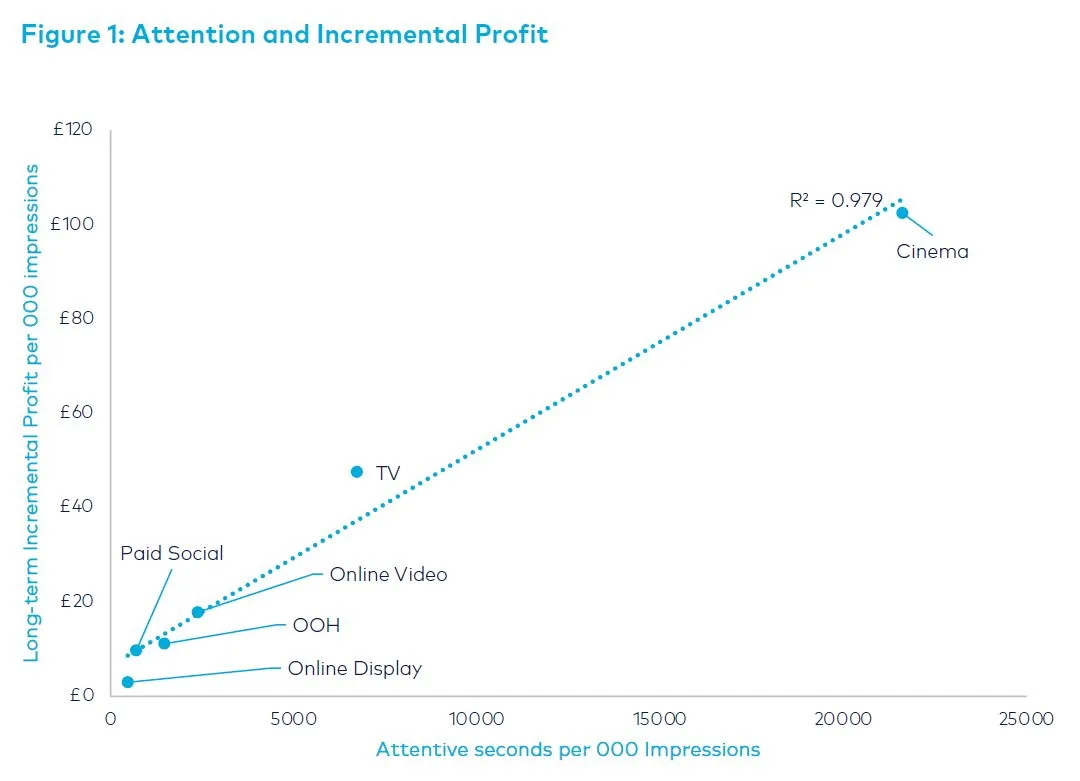
But here’s the catch: most attention research ignores direct mail. Until JICMAIL’s "The Time We Spend with Mail"4 study launched, which I was lucky enough to see the nicest man in marketing (Ian Gibbs) present at a Media Research Group conference recently. It showed that mail doesn’t just grab attention—it literally holds it for days.
Effectiveness Illustrator to the stars, Dan White, visualised this insight perfectly. Direct mail doesn’t get seconds of attention. It gets minutes. It lives in homes, sits on kitchen tables, gets pinned to fridges, and is revisited multiple times.
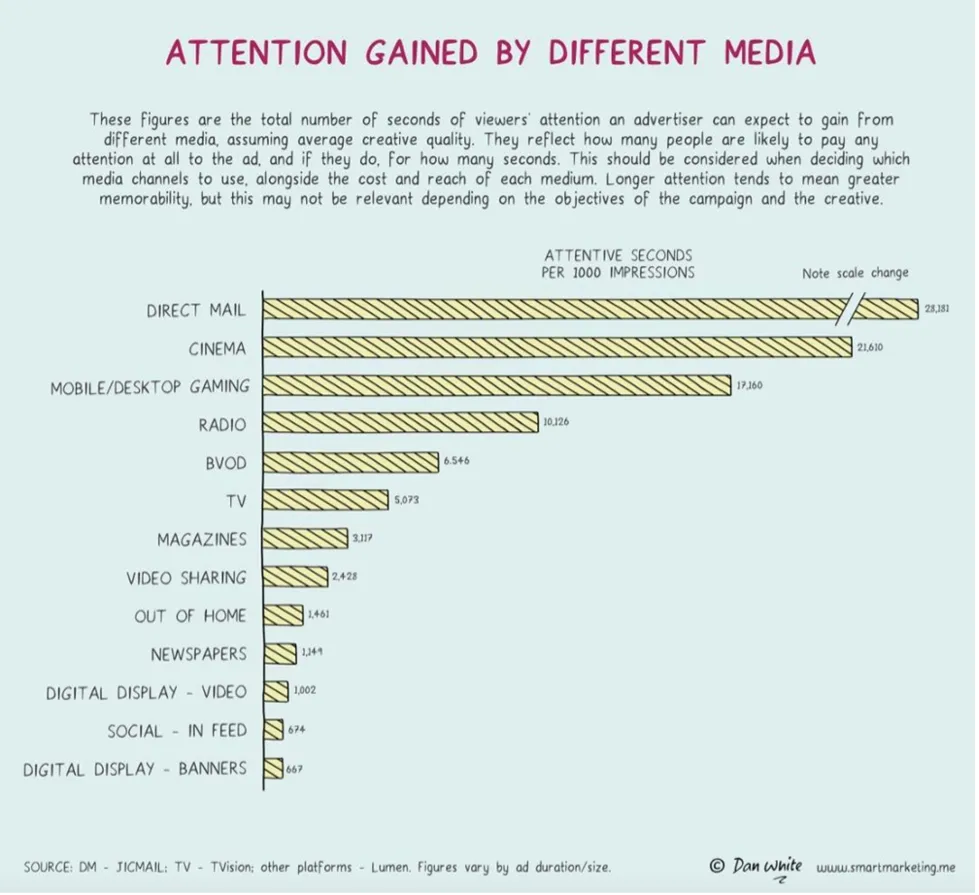
For years, I worked on global drinks brands, fighting to get branded glassware into people’s homes. Why? Because physical presence in someone’s home builds brand familiarity and emotional connection. Direct mail does the same thing—at scale. Just don’t try smashing 5 Bacardi mojitos out of a paper envelope.
Direct mail is a trust builder
Trust is one of the most overused—and under-examined—concepts in marketing. But real trust isn’t built overnight. It accumulates over time and is reinforced by credible, tangible signals.
In a world of phishing scams, fake news, and deepfakes, people are wary of digital interactions. Direct mail, on the other hand, is trusted. It’s private, secure, and free from the invasive tracking that turns many off digital marketing.
Effectiveness expert Peter Field has shown through IPA data5 that brand trust is increasingly linked to profit growth. Direct mail plays a crucial role here. However, if anyone has definitive proof that building mail into your media plan lifts trust - do send it to me. It appears no one has bothered to prove this out yet. Which is sort of my point.
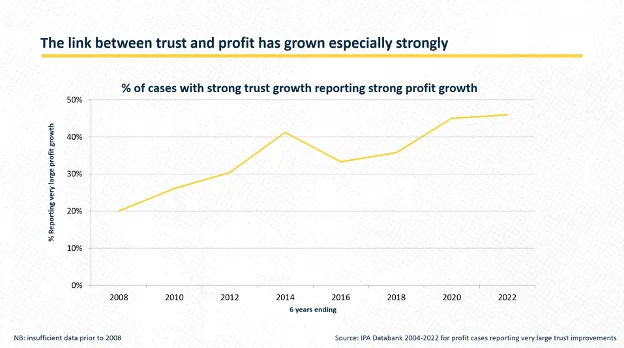
The 7-day opportunity
You read that right. Not 7 seconds, put your phone down for a minute. JICMAIL data shows that, on average, direct mail is kept for 7 days. That’s 7 days where your brand is present in someone’s home. That’s 7 days where the right creative execution could make an impact.
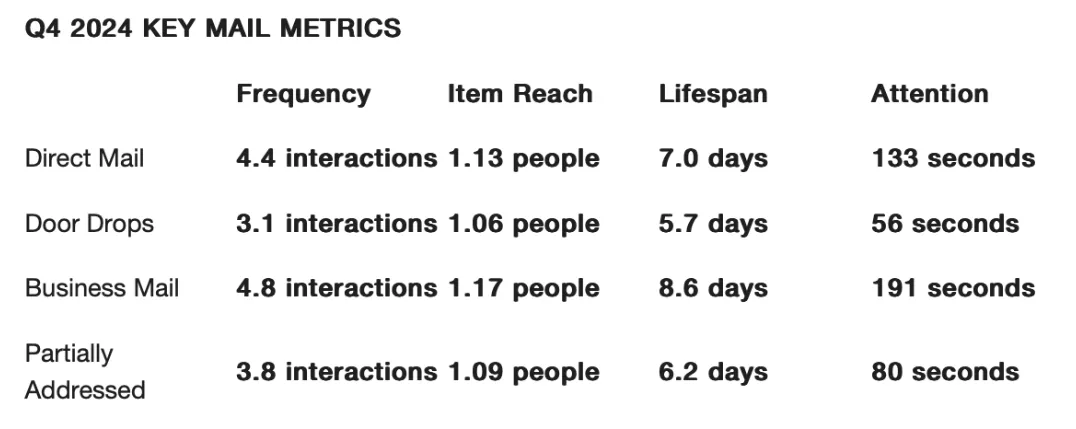
Imagine if the world’s best advertising minds turned their attention to crafting direct mail instead of just digital banners. The opportunity for creativity, storytelling, and engagement is massive.
Costly signalling and effectiveness
One of advertising’s key jobs is costly signalling—showing consumers that your brand is strong enough to invest in marketing.
Direct mail signals investment. It feels valuable. And as behavioural science tells us, people equate effort with importance. If a brand took the time to send something real, it must be worth paying attention to.
But does it stack up on cost?
Let’s be realistic. Direct mail has a high cost-per-thousand (CPM). But when you adjust for cost-per-minute of attention, the numbers start looking very different—especially when targeting high-value ABC1 audiences. Side note: this is why Kareen Nelson-Field calls CPM “Cost Per Meaningless Thousand”.
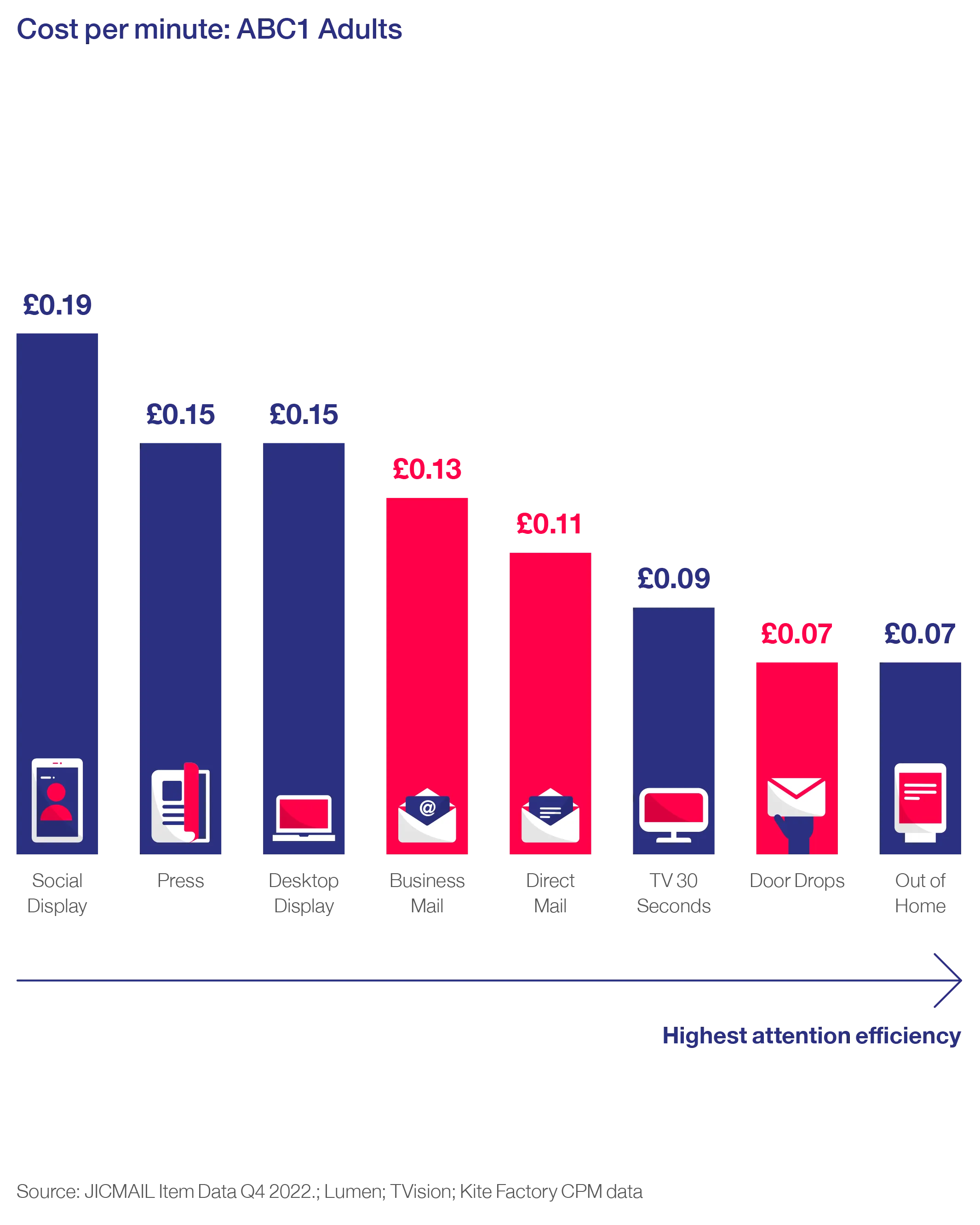
JICMAIL’s research shows that direct mail doesn’t just grab attention—it drives action. Data from the Intelligent Marketing Databank backs this up: when you want response and conversion, direct mail outperforms.
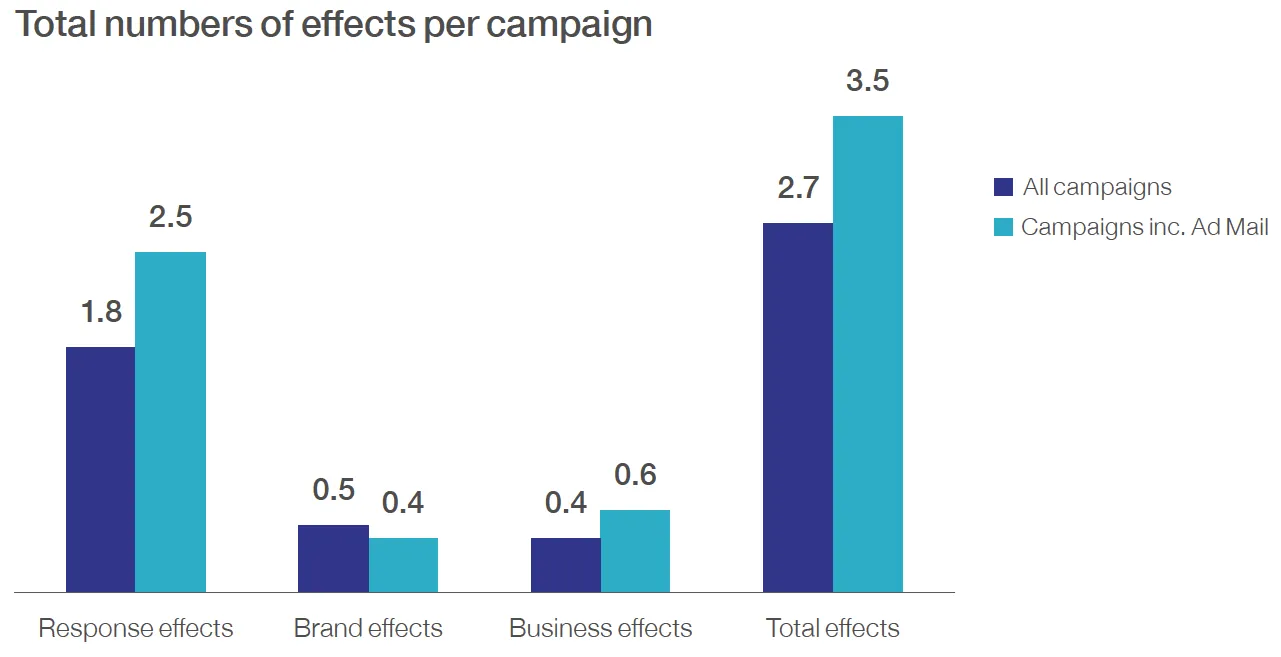
Final thought: the overlooked opportunity
The mix of physical presence, emotional engagement, high attention, trust, and creative potential makes direct mail a massively underutilised tool in modern marketing.
Yes, it requires investment. Yes, it requires effort. But for marketers who care about long-term brand growth and real consumer impact, direct mail isn’t a relic—it’s an opportunity.
So maybe it’s time for your first direct mail test.
After all, effectiveness is about what works—not just what’s fashionable.
- https://www.linkedin.com/feed/update/urn:li:activity:7288139276783955969/
- https://www.forbes.com/sites/brycehoffman/2024/02/19/affect-heuristic-what-it-is-and-how-to-avoid-it/
- https://www.linkedin.com/feed/update/urn:li:activity:7288139276783955969/
- https://www.jicmail.org.uk/data/attention-the-time-we-spend-with-mail/
- https://www.warc.com/content/paywall/article/event-reports/trust-in-advertising-and-why-it-matters/en-gb/150071?





